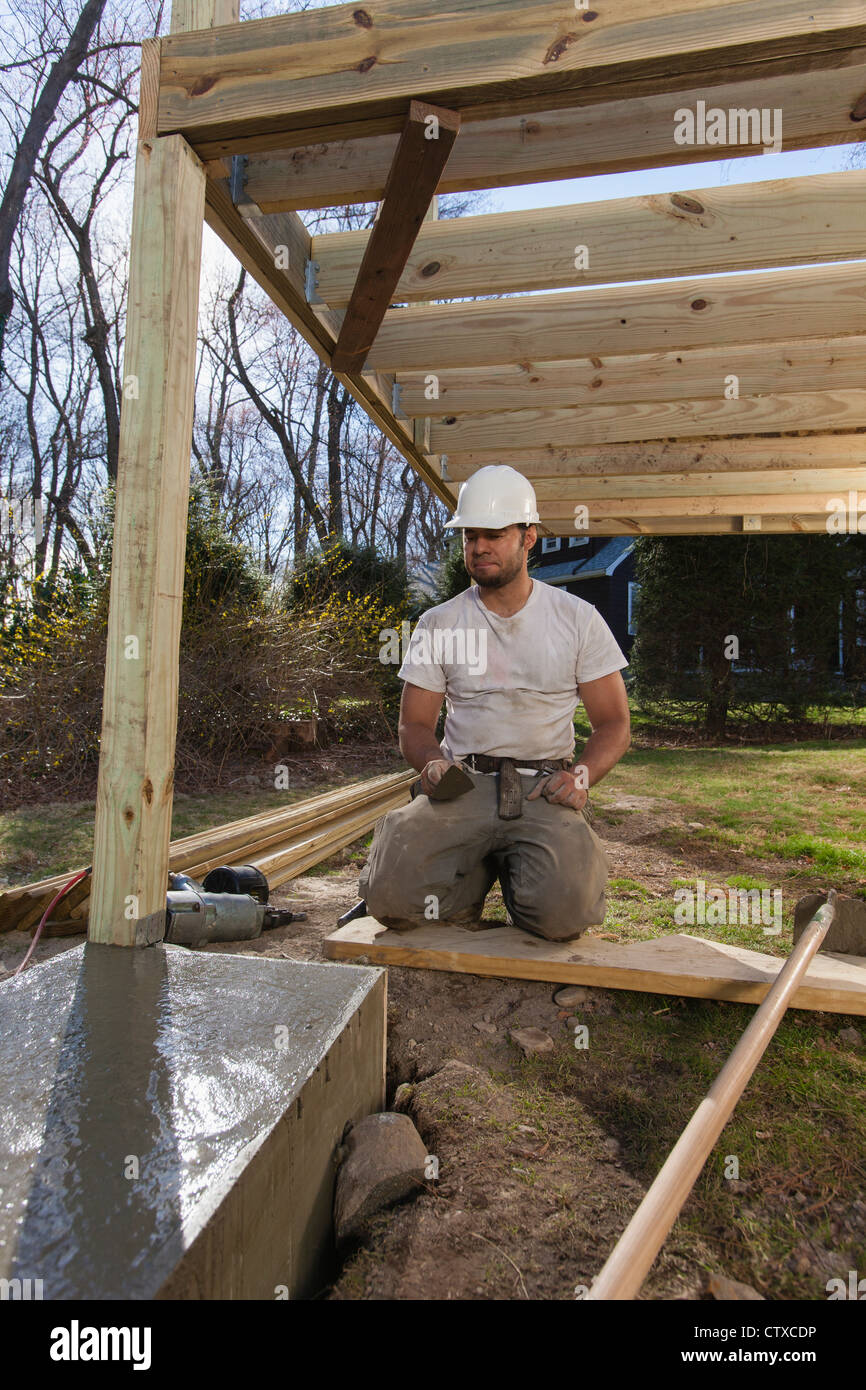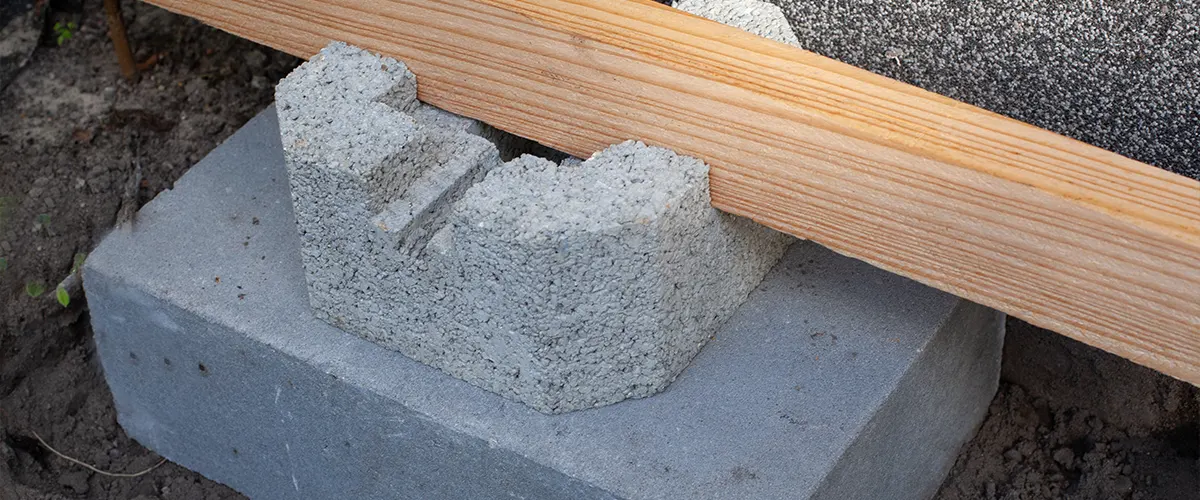Step-by-Step Deck Excellence: Making Certain Stability with Effectively Installed Deck Footings
Wiki Article
Choosing the Right Deck Footings for Stability and Durability
When it comes to constructing a deck, among the most crucial choices you will certainly make is selecting the right grounds for stability and sturdiness. The long life and safety of your deck depend heavily on the sort of grounds you select, as they supply the vital assistance and security to withstand the test of time. With a myriad of choices readily available, it can be frustrating to identify which footings are best suited for your details requirements. In this discussion, we will explore the numerous kinds of deck footings, take into consideration the vital aspects to weigh when choosing, and explore the pros and cons of different alternatives. By the end, you will have a clearer understanding of the selections at hand and be far better geared up to make a notified decision for your deck task.Types of Deck Footings
There are a number of kinds of deck grounds that can be made use of, each offering unique benefits and factors to consider. One usual kind of ground is the concrete pier ground. These footings contain a round opening full of concrete, which offers a strong structure for the deck articles. Concrete pier grounds are reasonably simple to mount and supply exceptional security, making them a preferred option for many deck jobs.These grounds are set up by screwing them right into the ground, which produces a protected foundation for the deck. They likewise permit for easy change and progressing of the deck if required.
Additionally, some contractors go with precast concrete grounds. These footings are constructed from sturdy concrete and can be found in various sizes and shapes to suit different deck styles. Precast concrete footings are practical to mount and give a steady base for the deck framework.
Ultimately, an additional option is the post-in-anchor ground system. This kind of footing includes driving a steel support into the ground and connecting it to the deck blog post. It supplies adaptability in terms of positioning the deck posts and is suitable for decks with lightweight frameworks.
When choosing the ideal kind of deck ground, it is necessary to consider aspects such as soil problems, deck load, and regional building ordinance (Deck Footings). Consulting with a professional service provider or architectural designer can assist make sure the ideal ground is chosen for a steady and risk-free deck
Factors to Think About When Choosing Grounds
When picking the appropriate footings for a deck, it is essential to carefully think about various factors such as soil conditions, deck lots, and adherence to regional building ordinance. These variables play a significant duty in ensuring the stability and resilience of the deck structure.The kind of dirt on which the deck will be developed establishes the type of grounds required. On the various other hand, decks developed on clay or extensive dirts may need grounds that can accommodate the soil's tendency to expand and contract.
Another essential aspect is the deck lots. The weight of the deck, consisting of the products used and any type of potential online tons such as furniture or celebrations, should be taken into consideration when picking footings. The footings have to be developed to bear the weight of the deck and distribute it evenly to stop any type of structural issues or failings.
Lastly, adherence to regional building regulations is critical. Building ordinance differ from area to region, and it is necessary to comply with the certain needs set by the local authorities. Deck Footings. These codes make certain that the deck is built safely and satisfies the needed standards for structural stability and load-bearing ability
Concrete Footings: Cons and pros

Concrete footings use several benefits and disadvantages when utilized as the foundation for a deck. On the silver lining, concrete footings provide exceptional security and toughness. Concrete is a inflexible and solid product that can sustain heavy lots and endure different climate conditions. It likewise has a lengthy life expectancy, making it a trustworthy option for lasting use.
One more advantage of concrete footings is their adaptability. They can be poured into different sizes and shapes to accommodate numerous deck styles and setups. Concrete grounds can be customized to fit the specific requirements and requirements of the deck framework.
Nonetheless, there are additionally some downsides to using concrete footings. This can boost the overall price of the deck task and might need specialist assistance.

Helical Piers Vs. Sonotubes: Which Is Better?
In taking into consideration the foundation options for a deck, the comparison in between helical piers and sonotubes is crucial in identifying the premium option. Helical piers, additionally referred to as screw heaps, are steel shafts with helical plates affixed to them. They are turned into the ground using hydraulic equipment, supplying a sturdy and steady foundation for the deck. On the other hand, sonotubes are round kinds made of cardboard or fiber material that are loaded with concrete. They are positioned in an opening went into the ground and offer assistance for the deck.The helical plates on the piers produce a strong hold with the soil, shifting or avoiding any type of activity of the deck. Sonotubes, on the various other hand, depend solely on the concrete filling up for security, which might not offer the very same level of strength and resistance.
In terms of setup, helical piers are reasonably less complicated and faster to install contrasted to sonotubes. The hydraulic my site machinery utilized to turn the piers right into the ground ensures a fast and reliable procedure. Sonotubes, on the other hand, need digging holes and pouring concrete, which can be labor-intensive and taxing.
Additionally, helical piers are a more flexible option. They can be used in different soil problems and can be readjusted or strengthened if required. Sonotubes, on the various other hand, might call for added support, such as rebar, in particular dirt conditions or areas with high lots demands.
Picking the Right Footings for Your Deck's Dimensions
For optimum architectural integrity, it is necessary to very carefully select the ideal footings that straighten with the measurements of your deck. The measurements of your deck, including its length, elevation, and width, play a significant function in figuring out the kind and dimension of grounds required.When picking footings for your deck, it is vital to take into consideration the load-bearing capacity of the dirt. The weight of the deck, incorporated with the weight of any kind of furniture or people on it, applies a substantial pressure on the grounds (Deck Footings). For that reason, it is important to select grounds that can properly support this weight without sinking or shifting in time.
Bigger decks with greater measurements call for larger footings to give sufficient security and support. The form of the more tips here footings, whether they are rounded or square, depends on the design and design of the deck.
Conclusion
In conclusion, selecting the best deck grounds is important for ensuring stability and sturdiness. Factors such as the kind of footings, the deck's dimensions, and the pros and cons of different options ought to be considered.These footings consist of a round hole filled with concrete, which gives a strong structure for the deck posts. Concrete pier grounds are relatively very easy to mount and offer superb security, making them a popular choice for several deck jobs.
Precast concrete grounds are practical to set up and offer a stable base for the deck framework.
It supplies flexibility in terms of placing the deck blog posts and is suitable for decks with lightweight structures.
Concrete grounds supply several benefits and disadvantages when made use of as the foundation for a deck.
Report this wiki page